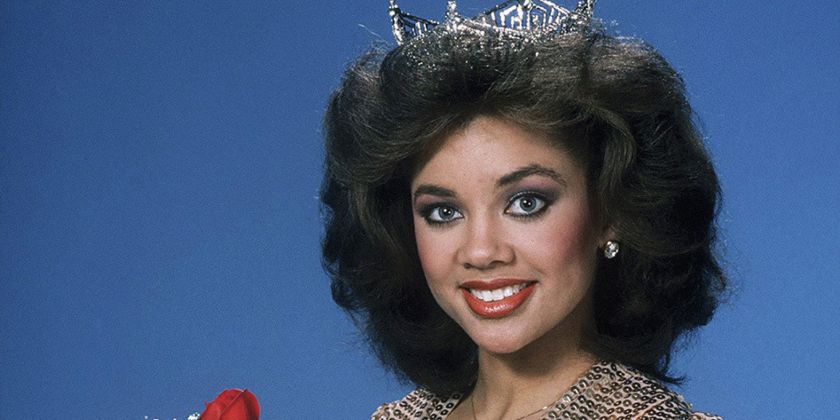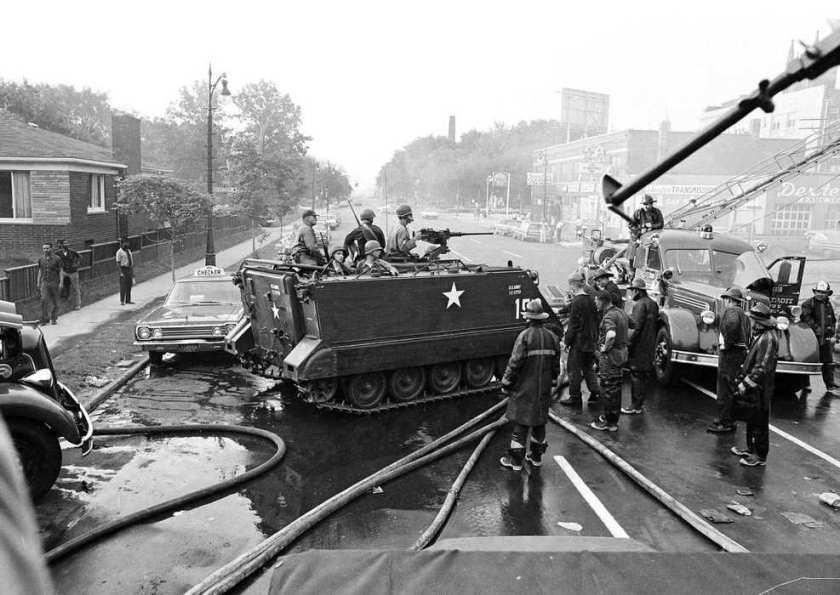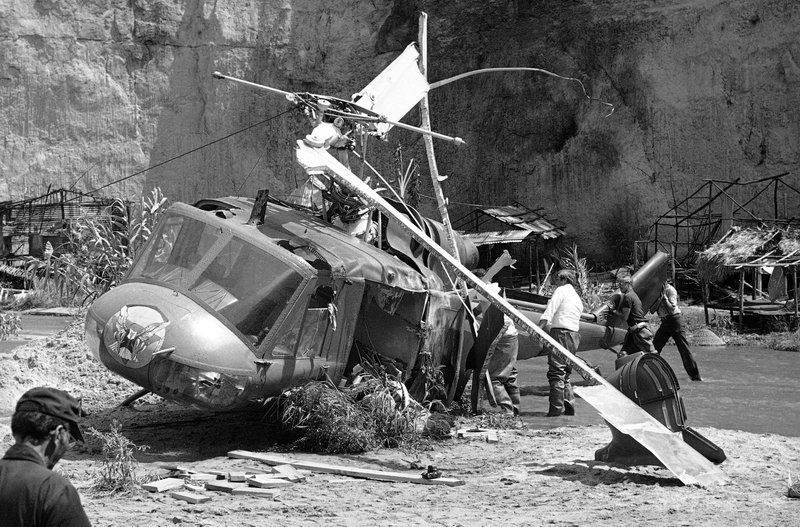It’s Monday! Did You Know…
* 1983 – Gimli Glider – Air Canada 767 runs out of fuel in midair.
Air Canada admitted that its Boeing 767 jet ran out of fuel in mid-flight because of two mistakes in figuring the fuel supply of the airline’s first aircraft to use metric measurements.
After both engines lost their power, the pilots made what is now thought to be the first successful emergency ”dead stick” landing of a commercial jetliner.
The pilots of the Ottawa-to-Edmonton flight came in over the end of the runway at Gimli, Manitoba, at an abnormally high speed of about 180 knots because the engine failure made it impossible to use the flaps to make a slower approach. But the only serious damage was a collapsed nose gear, and the only casualties among the 69 people on board were two passengers who suffered minor injuries.
The captain, Robert Pearson, was helped in gauging his approach to the 6,800-foot-long strip by the fact that he has had a glider-pilot license for 10 years. Another fortunate circumstance was that the copilot, Maurice Quintal, had taken training in the Canadian Air Force at the Gimli field, which is no longer in active use except as a drag strip for automobile races. Concern and Admiration
The entire episode produced two contradictory emotions in the aviation world. One was deep concern over how simple errors, this time in a switch to the metric system with the introduction of the Boeing 767, could come so close to producing a major disaster. The other was admiration at the skill of the pilots, whatever their role in the original errors, in putting the huge wide-body craft down safely when, without power, they would have no chance to make second landing approach.

* 1984 Miss America resigns.
On this day in 1984, 21-year-old Vanessa Williams gives up her Miss America title, the first resignation in the pageant’s history, after Penthouse magazine announces plans to publish nude photos of the beauty queen in its September issue. Williams originally made history on September 17, 1983, when she became the first black woman to win the Miss America crown. Miss New Jersey, Suzette Charles, the first runner-up and also an African American, assumed Williams’ tiara for the two months that remained of her reign.
Vanessa Lynn Williams was born March 18, 1963, in Millwood, New York, to music teacher parents. She attended Syracuse University and studied musical theater. In 1982, while working a summer job as a receptionist at a modeling agency in Mt. Kisco, New York, photographer Thomas Chiapel took the nude pictures of Williams, telling her they’d be shot in silhouette and that she wouldn’t be recognizable. After Williams became Miss America, the photographer sold the pictures to Penthouse without her knowledge. Williams later dropped lawsuits against the magazine and photographer after it was learned that she had signed a model release form at the time the photos were taken.
The Miss America pageant, which prides itself on projecting a wholesome, positive image of women, began in 1921 in Atlantic City, New Jersey, as a stunt developed by local businessmen to extend the summer tourist season. In 1945, the Miss America Organization handed out its first scholarship. Today, it provides over $45 million each year in cash and tuition assistance to contestants on the national, state and local levels. In 1954, the competition was broadcast live for the first time. Beginning in the 1980s, contestants were required to have a social platform, such as drunk-driving prevention or AIDS awareness, and Miss America winners now travel an estimated 20,000 miles a month for speaking engagements and public appearances. In 2006, following a decline in TV ratings, the pageant moved from Atlantic City for the first time in its history and took place in Las Vegas, where a new Miss America was crowned in January instead of September.
Vanessa Williams rebounded from the Miss America scandal and went on to a successful entertainment career as an actress and recording artist, performing on Broadway as well as in movies and television and releasing a number of popular albums.

* 1967 Detroit Riots Begin.
The 1967 Detroit Riots were among the most violent and destructive riots in U.S. history. By the time the bloodshed, burning, and looting ended after five days, 43 people were dead, 342 injured, nearly 1,400 buildings had been burned and some 7,000 National Guard and U.S. Army troops had been called into service.
In the sweltering summer of 1967, Detroit’s predominantly African-American neighborhood of Virginia Park was a simmering cauldron of racial tension. About 60,000 low-income residents were crammed into the neighborhood’s 460 acres, living mostly in small, sub-divided apartments.
The Detroit Police Department, which had only about 50 African American officers at the time, was viewed as a white occupying army. Accusations of racial profiling and police brutality were commonplace among Detroit’s black residents. The only other whites in Virginia Park commuted in from the suburbs to run the businesses on 12th Street, then commuted home to affluent enclaves outside Detroit.
The entire city was in a state of economic and social strife: As the Motor City’s famed automobile industry shed jobs and moved out of the city center, freeways and suburban amenities beckoned middle-class residents away, which further gutted Detroit’s vitality and left behind vacant storefronts, widespread unemployment, and impoverished despair.
At night, 12th Street in Detroit was a hotspot of inner-city nightlife, both legal and illegal. At the corner of 12th St. and Clairmount, William Scott operated a “blind pig” (an illegal after-hours club) on weekends out of the office of the United Community League for Civic Action, a civil rights group. The police vice squad often raided establishments like this on 12th St., and at 3:35 a.m. on Sunday morning, July 23, they moved against Scott’s club.
On that warm, humid night, the establishment was hosting a party for several veterans, including two servicemen recently returned from the Vietnam War, and the bar’s patrons were reluctant to leave the air-conditioned club. Out in the street, a crowd began to gather as police waited for vehicles to take the 85 patrons away.
An hour passed before the last person was taken away, and by then about 200 onlookers lined the street. A bottle crashed into the street. The remaining police ignored it, but then more bottles were thrown, including one through the window of a patrol car. The police fled as a small riot erupted. Within an hour, thousands of people had spilled out onto the street from nearby buildings.
Looting began on 12th Street, and closed shops and businesses were ransacked. Around 6:30 a.m., the first fire broke out, and soon much of the street was ablaze. By midmorning, every policeman and fireman in Detroit was called to duty. On 12th Street, officers fought to control the unruly mob. Firemen were attacked as they tried to battle the flames.
Detroit Mayor Jerome P. Cavanaugh asked Michigan Governor George Romney to send in the state police, but these 300 additional officers could not keep the riot from spreading to a 100-block area around Virginia Park. The National Guard was called in shortly after but didn’t arrive until evening. By the end of Sunday, more than 1,000 people were arrested, but the riot kept spreading and intensifying. Five people had died by Sunday night.
On Monday, the rioting continued and 16 people were killed, most by police or guardsmen. Snipers reportedly fired at firemen, and fire hoses were cut. Governor Romney asked President Lyndon B. Johnson to send in U.S. troops. Nearly 2,000 army paratroopers arrived on Tuesday and began patrolling the streets of Detroit in tanks and armored carriers.
Ten more people died that day, and 12 more on Wednesday. On Thursday, July 27, order was finally restored. More than 7,000 people were arrested during the four days of rioting. A total of 43 people were killed. Some 1,700 stores were looted and nearly 1,400 buildings burned, causing roughly $50 million in property damage. Some 5,000 people were left homeless.

* 1982 Actor and two children killed on Twilight Zone set.
On this day in 1982, Vic Morrow and two child actors, Renee Shinn Chen and Myca Dinh Le, are killed in an accident involving a helicopter during filming on the California set of Twilight Zone: The Movie. Morrow, age 53, and the children, ages six and seven, were shooting a Vietnam War battle scene in which they were supposed to be running from a pursuing helicopter. Special-effects explosions on the set caused the pilot of the low-flying craft to lose control and crash into the three victims. The accident took place on the film’s last scheduled day of shooting.
Twilight Zone co-director John Landis (Blues Brothers, Trading Places, National Lampoon’s Animal House) and four other men working on the film, including the special-effects coordinator and the helicopter pilot, were charged with involuntary manslaughter. According to a 1987 New York Times report, it was the first time a film director faced criminal charges for events that occurred while making a movie. During the subsequent trial, the defense maintained the crash was an accident that could not have been predicted while the prosecution claimed Landis and his crew had been reckless and violated laws regarding child actors, including regulations about their working conditions and hours. Following the emotional 10-month trial, a jury acquitted all five defendants in 1987. The families of the three victims filed lawsuits against Landis, Warner Brothers and Twilight Zone co-director and producer Steven Spielberg that were settled for undisclosed amounts.
Twilight Zone: The Movie was released in the summer of 1983. The film, which received mixed reviews, was based on a popular science fiction TV series of the same name that aired from 1959 to 1964 and was created by Rod Serling. In the movie, four directors– Landis, Steven Spielberg, Joe Dante and George Miller–each adapted a different episode of the TV series, which chronicled the stories of people who found themselves in highly unusual situations.
Vic Morrow had previously appeared in numerous TV shows and such films as The Blackboard Jungle (1955) and The Bad News Bears (1976). He was the father of actress Jennifer Jason Leigh (Fast Times at Ridgemont High, Margot at the Wedding).

* 1988 Guns N’ Roses make popular breakthrough with “Sweet Child O’ Mine”.
In the 1980s, Los Angeles was a mecca for so-called “glam rock” bands and the “sex, drugs and rock and roll” lifestyle with which they came to be associated. On any given night inside clubs like the Troubadour and the Whisky a Go Go, you could not only hear bands like Hanoi Rocks and Mötley Crüe or, later, Winger and Warrant, but you could also witness an expression of that lifestyle as decadent as any the music world had seen. The rise of “grunge” bands like Nirvana and alternative rock effectively put an end to that scene in the early 1990s, but the first blow was struck by one of their own: Guns N’ Roses, the band that made its big popular breakthrough on July 23, 1988, when their first hit single, “Sweet Child O’ Mine” entered the Billboard Top 40.
To the guys in pop-metal groups like Poison, Guns N’ Roses might have seemed at first to be just another fellow hair band, but Axl Rose and the rest of the classic GN’R lineup—Slash, Izzy Stradlin, Duff McKagan and Steven Adler—were interested in rock and roll that was much more raw, angry and honest than what the pop-metal bands were playing. Originally formed out of the ashes of two other groups—L.A. Guns and Hollywood Rose—Guns N’ Roses played in a style that owed much more to the pure hard rock of the 1970s than to the showy heavy metal of the 1980s. Signed to Geffen in 1986, GN’R released their first full-length album, Appetite For Destruction, the following summer, and with it their debut single, “Welcome To The Jungle.” Appetite For Destruction would eventually be certified 15-times Platinum, and “Welcome To The Jungle” would become a massively popular Top 10 hit, but neither the album nor its first single was an immediate success. It took nearly a year of touring and the release of a second single, “Sweet Child O’ Mine,” to earn Guns N’ Roses a place in music history.
Built around an opening riff that GN’R guitarist Slash considered a silly throwaway, “Sweet Child O’ Mine” went on to become not just a #1 hit on this day in 1988, but also a true rock classic. Voted onto “greatest” lists by Rolling Stone, Blender, the RIAA, BBC and the like, “Sweet Child O’ Mine” made stars out of Guns N’ Roses, and it made so-called “power ballads” like Poison’s “Every Rose Has Its Thorn” seem weak by comparison.

Today’s Sources:
* Canadian History Timeline – Canada’s Historical Chronology http://canadachannel.ca/todayincanadianhistory/index.php
* New York Times https://www.nytimes.com/1983/07/30/us/jet-s-fuel-ran-out-after-metric-conversion-errors.html
* This Day In History – What Happened Today http://www.history.com/this-day-in-history/


The Detroit riots began the cyclical events leading to the failure of the city. I was living in Lansing Michigan at the time and the riots spread to that city as well. There were those who tried to say the riots were the militant result of racism. Having witnessed the rampaging crowds I would say most participants were involved in criminal behavior. What a story on the 767. In the end, the pilots were responsible for the fuel level. Thank heavens they were able to redeem themselves. Nice job, John
LikeLiked by 1 person
It is terrible when criminal elements take over legitimate protests. Simplistic explanations and solutions will not fix these complex situations. Yes, those pilots did a nice job – the horrors of changing to metric measures, eh!
LikeLiked by 1 person
😀
LikeLike
The pilot of the Air Canada 767 was amazing. How horrifying to run out of fuel in midair! I vividly remember when Vanessa Williams resigned as Miss America. I wonder if the same would occur today? I have no recall of the Detroit Riots or those killed on the Twilight Zone set. Thank you for bringing these stories to readers.
LikeLiked by 1 person
It was very fortunate that the Air Canada pilot had a glider license! A friend of mine lived in Windsor at the time of the riots and said that the US Army parked a tank on the Ambassador Bridge (Border crossing) pointing to Windsor! Yikes! Thanks, Gwen!
LikeLike
I’d forgotten about those Detroit riots, thanks for the reminder… well, sort of. Makes one wonder how come more of that isn’t happening today in many US cities. What is keeping the violence down? Drugs? Apathy? It certainly isn’t improved living conditions and more “equal opportunities” for minorities. Maybe it’s simply fear of the security state? Or perhaps those who could spark trouble are either dead, in jail or crawling about rock piles in Afghanistan as members of the volunteer army? Just thinking out loud…
LikeLiked by 1 person
I’ve wondered about those same things as well – although there are shootings every day. Unfortunately, even Toronto is getting into the act this year with a record number of shootings and the year is just half over. Thanks, Sha’Tara.
LikeLike